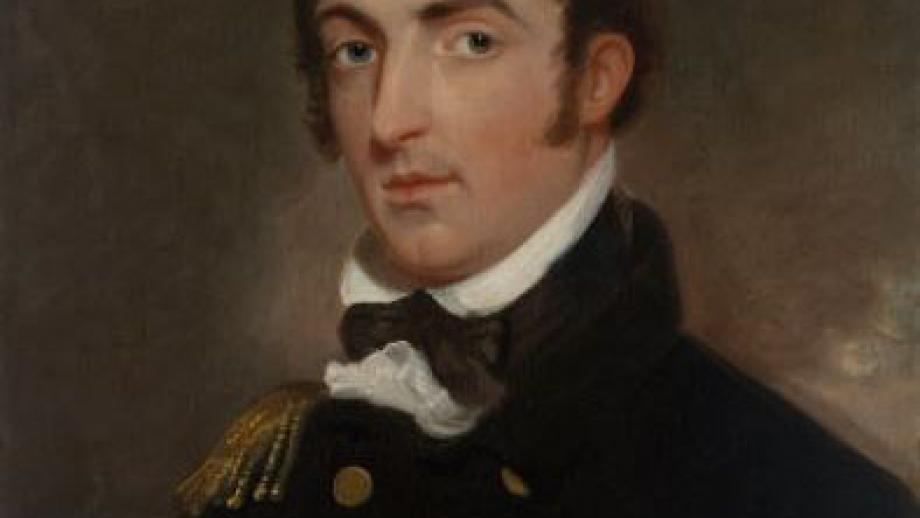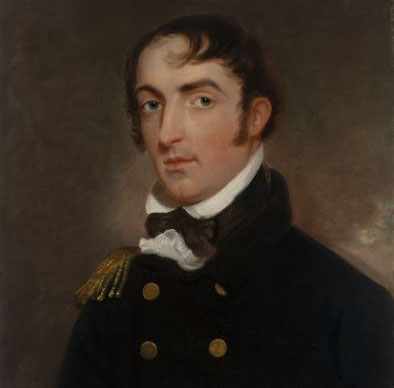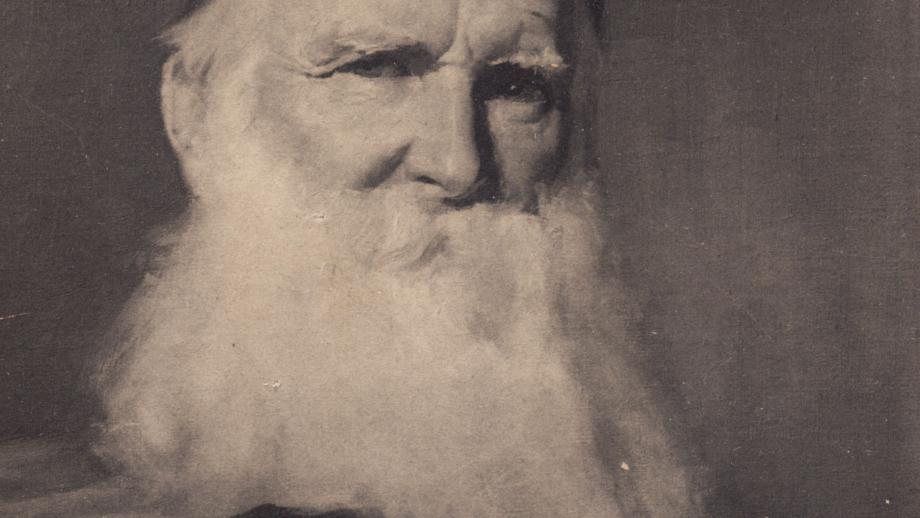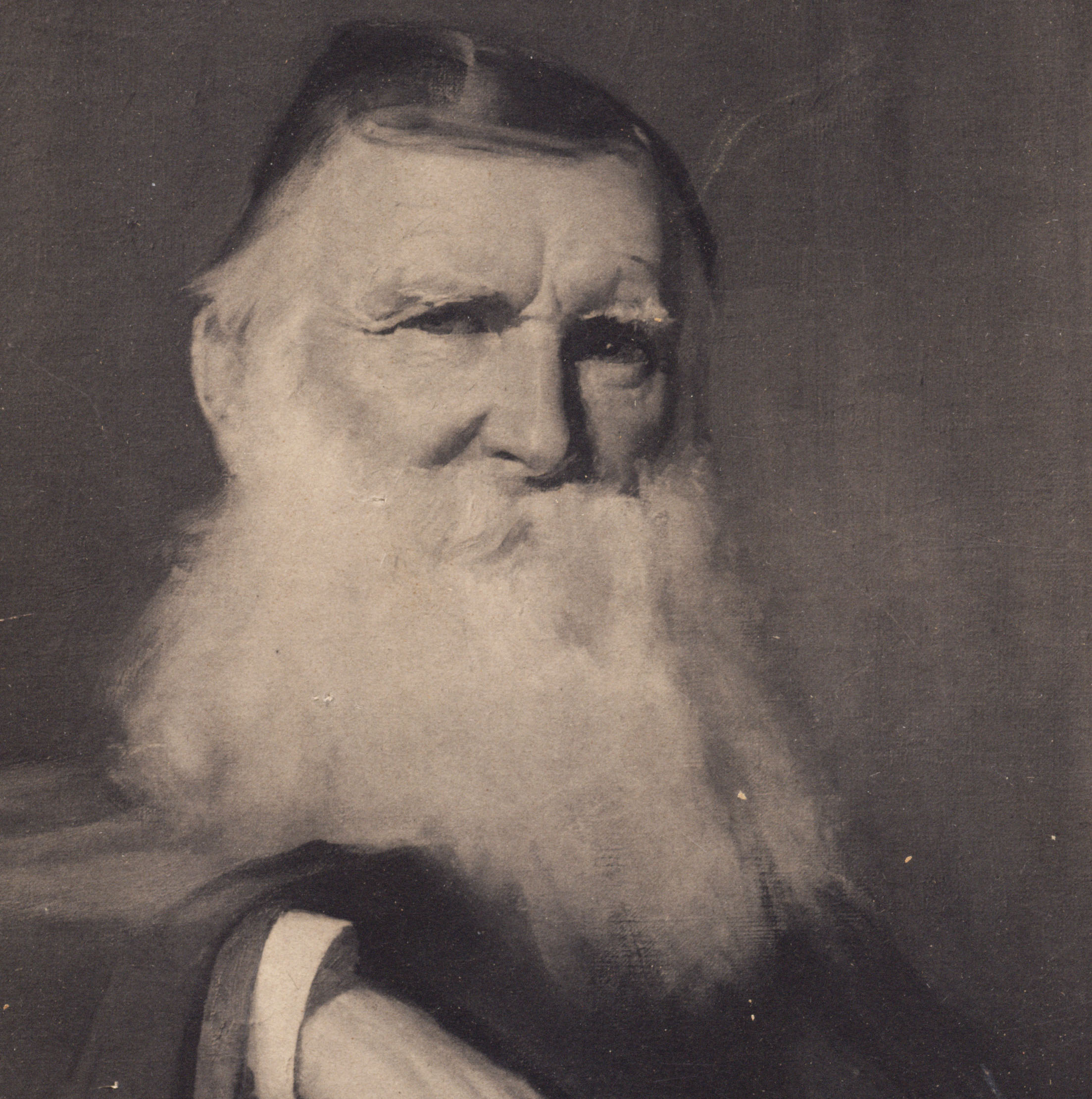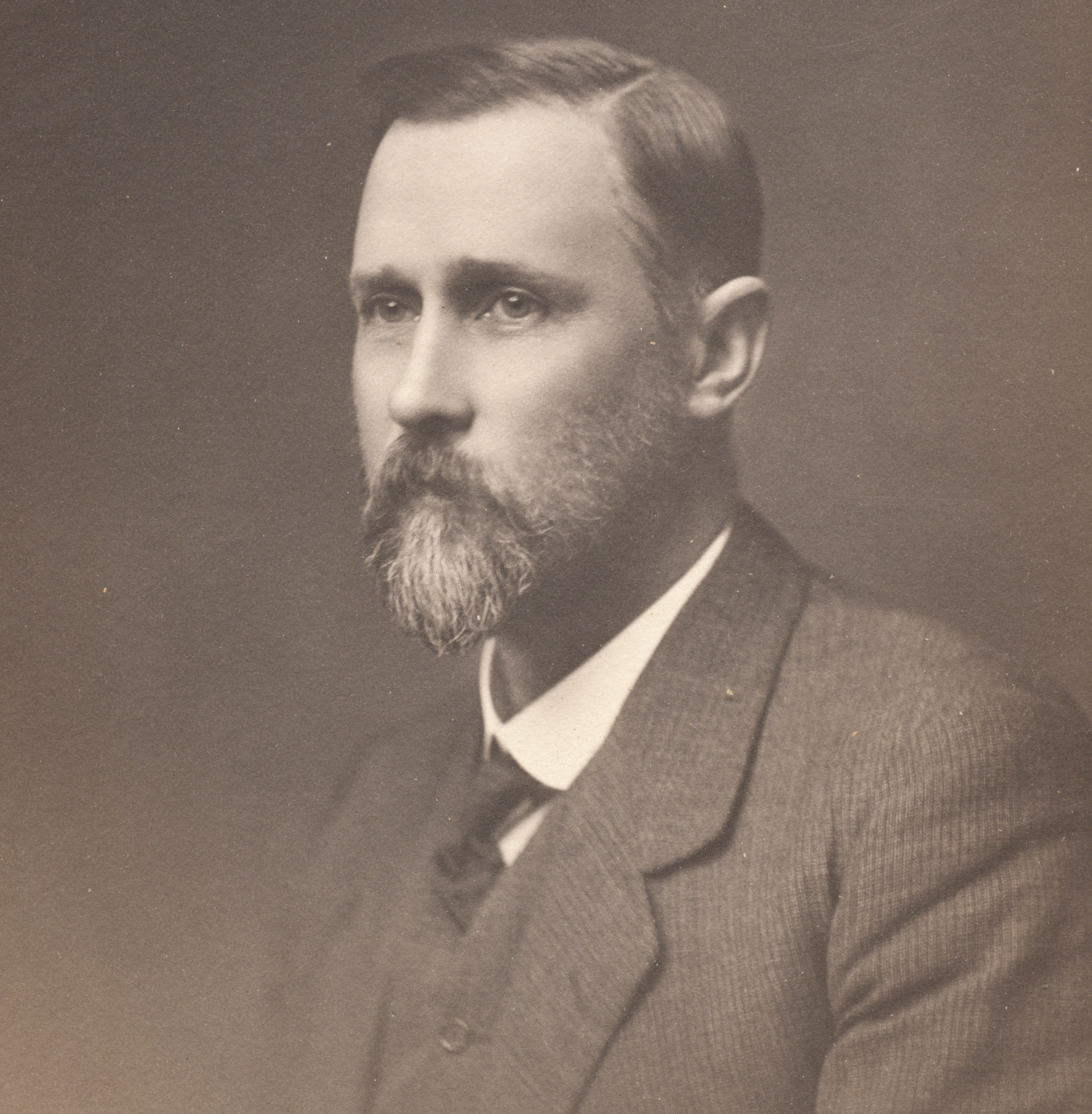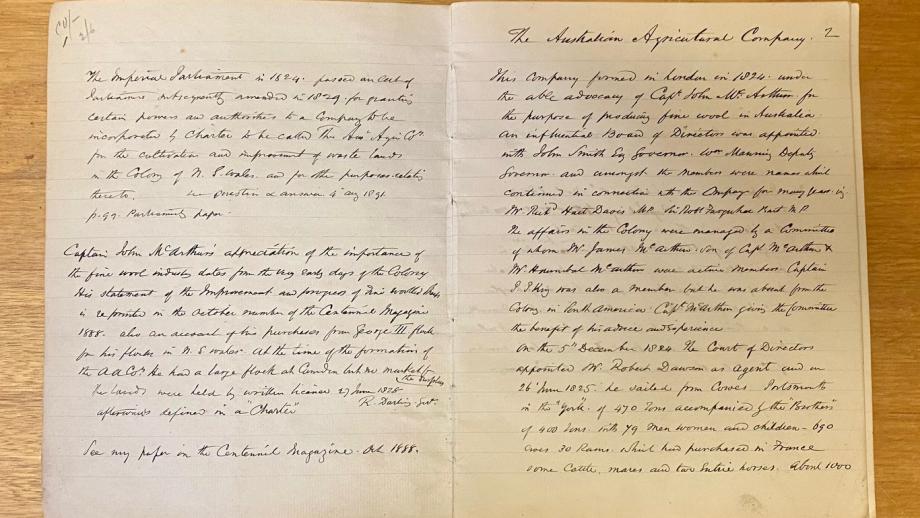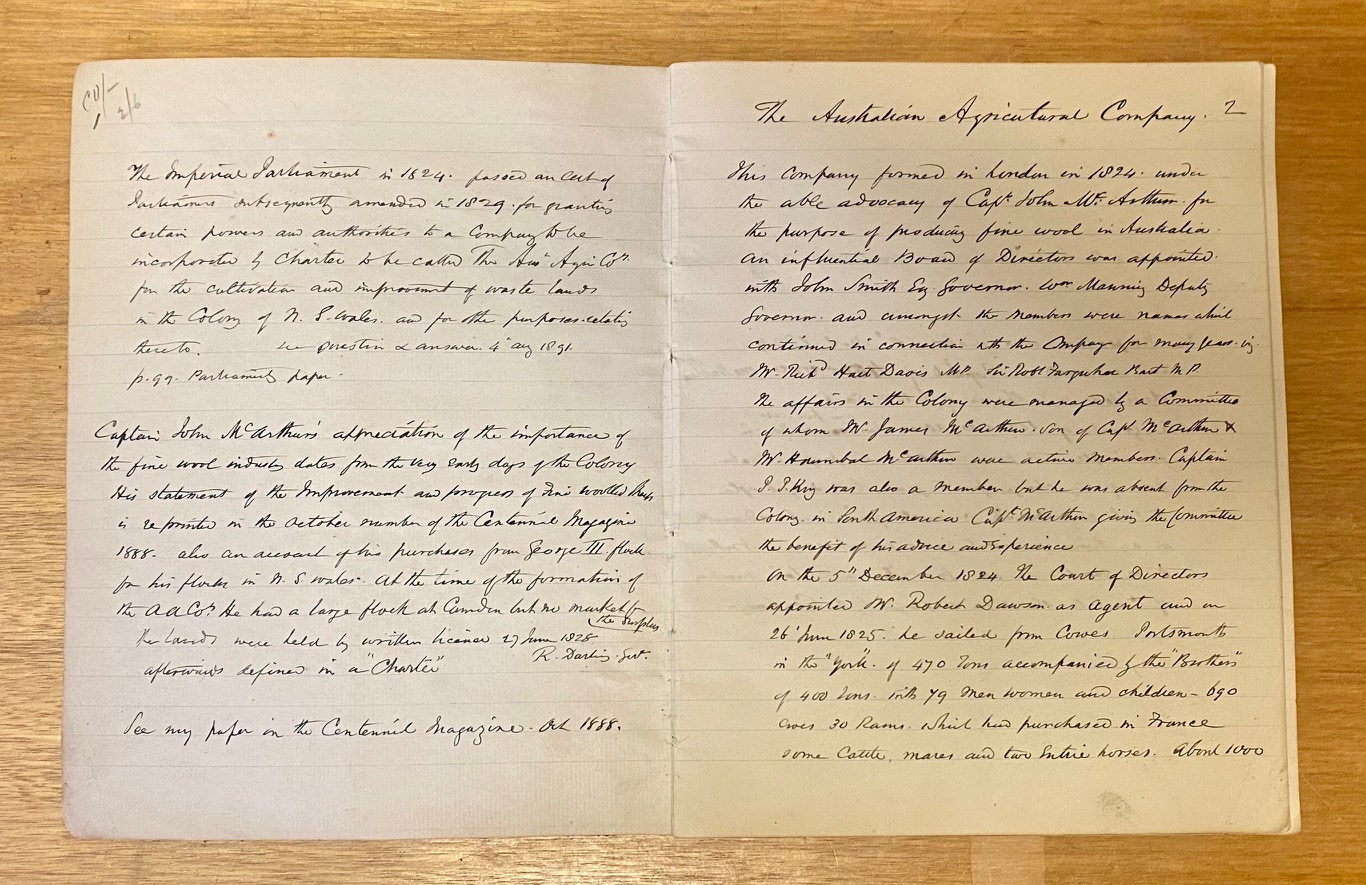The Kings
Phillip Parker King (Commissioner 1839-49)
Phillip Parker King, the son of the third Governor of New South Wales, Philip Gidley King, was born on Norfolk Island in 1791. It is noted that Phillip was spelled with two ls rather than one, as he was named after Governor Arthur Phillip rather than his father.
King was educated in England and entered the Royal Navy, where he excelled as a surveyor. After his arrival back in Australia, he was tasked with continuing the coastal exploration work of Matthew Flinders. Between 1817 and 1830 King undertook several expeditions to survey Australia’s coast, particularly in the north, and his travels took him to areas including the North West Cape, Torres Strait, and Macquarie Harbour. On some of these trips he was accompanied by the Aboriginal men Bungaree (Boongarie) and Bundell, who acted as mediators between the crew and Aboriginal groups they encountered. Bungaree (Boongarie) had also accompanied Matthew Flinders on his expeditions and was given the title of ‘Chief of the Broken Bay Tribe’ by Governor Lachlan Macquarie for his work as a mediator between the colonists and the traditional Aboriginal owners.
King returned to England in 1823. While there he was made a Fellow of the Royal Society and lauded as one of Britain’s leading hydrographers. In 1826 he set out as captain of HMS Adventure to survey the coast of South America. The ship was accompanied by HMS Beagle with Charles Darwin on board.
In poor health after his return from South America in 1830, King made the decision to retire to his estate in Australia and arrived in Sydney in 1832. By this time, he had amassed a sizeable estate of over 4,000 acres to the west of Sydney near modern-day Rooty Hill. His time in Australia was certainly not spent in leisure however, and he was appointed to the New South Wales Legislative Council in 1839. That same year, he was appointed Commissioner of the Australian Agricultural Company, having already been associated with the Company as a shareholder since its inception in 1824. He had also been invited to join the Colonial Committee but refused the offer, claiming he was too busy with other duties.
As Commissioner of the Company between 1839-49, King oversaw several significant developments, including the transition from using mainly convict labour to mainly free labour, the abandonment of the coal monopoly at Newcastle, and the disposal of much of the Company’s land to smaller settlers (National Centre for Biography 2006).
When King commenced with the Australian Agricultural Company on 8 April 1839, he was given an annual salary of £1,000. In the early 1840s, with the Company in financial difficulty owing to drought, labour shortages, and falling demand for coal, King requested the Company reduce his salary and those of his officers, but curiously the directors refused.
By the mid-1840s, under a proposal by King, the Company had obtained power to alienate 500,000 acres (202,345 hectares) of its land and by 1847 all the Company's properties had been freed from all imposed conditions and it was able to sell land as it wished (National Centre for Biography 2006). King travelled to England in 1849 to assist in considering the Company’s future. He came up against James Ralfe’s grandiose and impractical plan for the settlement of farmers to whom the Company had sold land and their scepticism about his evaluation the Liverpool Plains and Peel Estates. However, in reducing the value and prospects of the Company’s holdings to such an extent, King’s position was subsequently seen as unnecessary and the management of its operations in Australia was restructured. King had essentially told the Company the truth about their holdings. He agreed to go quietly if the position of his son Philip Gidley King was protected.
During King’s time at Tahlee, many eminent scientific and other eminent persons visited Tahlee. He also wrote to the Sydney Morning Herald on scientific matters including the weather.
King was in increasing ill health in the 1850s and on 26 February 1856 he collapsed at the front gate of his North Sydney home and died, leaving his widow and eight children, the eldest of which, Philip Gidley King, was Stock Manager of the Australian Agricultural Company.
King was remembered as the first Australian-born man to attain eminence outside the Australian colonies and described as the greatest of the early Australian marine surveyors (National Centre of Biography 2006). He was the first Australian-born Admiral in the Royal Navy and he was buried with full naval honours.
References
Phillip Parker King (1791-1856) 2006, Australian Dictionary of Biography, National Centre of Biography, Australian National University,<https://adb.anu.edu.au/biography/king-phillip-parker-2310/text2993>
Philip Gidley King (General Superintendent Peel River Land and Mineral Company 1854-1904)
Philip Gidley King was born in Parramatta in New South Wales in 1817, the eldest son of Captain Phillip Parker King and grandson of naval commander and Governor of New South Wales Philip Gidley King.
Between 1826-30 King sailed with his father on his survey of South America, before joining the crew of H.M.S. Beagle in 1831 to continue this work alongside Charles Darwin. Upon his return to Australia, King spent time in the Port Phillip District of Victoria learning about handling livestock as well as surveying the road from Gloucester to the New England district in New South Wales, which became the Australian Agricultural Company’s ‘Company Line’ (O’Grady 2006).
In 1842 King was placed in charge of the Australian Agricultural Company’s livestock at Stroud on the Port Stephens Estate. In 1851 he was appointed superintendent of all the Company’s livestock before becoming Assistant Superintendent.
In 1852 gold was discovered on the Company’s Peel Estate, prompting the formation of the Peel River Land and Mineral Company in 1854. King was asked to become the inaugural General Superintendent of the new company and he and his family relocated to Goonoo Goonoo on the Peel Estate.
In 1875/6 King built a town house, ‘Calala’, on land he purchased in Tamworth. He became the first Mayor of Tamworth in 1876 and was very involved in the Tamworth community. He also spent increasing time in Sydney, with the establishment of the railway in 1878 enabling him to travel regularly between Tamworth and his home ‘Banksia’ in Double Bay.
King’s tenure was plagued by difficulties: gold prospectors flocked into the company's property at Anderson's Flat, and when gold was found in the bed of the river itself, the company's boundary being the centre line of the river, chaos resulted. Eventually the company directors issued mining licences at 10s. a month and a system of river-bed licences was devised with the Crown, the directors each receiving half the fee. The gold rush robbed King of shepherds and stockmen, but he managed the estate efficiently. He had a township laid out on the south eastern side of Goonoo Goonoo across the river from the Nundle goldfield. A sale of town lots was held on 1 July 1854, and Goonoo Goonoo itself became almost a village in the 1870s with its elaborate station homestead, post office, school, numerous cottages for employees, accommodation house and woolshed.
Although physically and mentally taxed by his managerial duties King was prominent in local affairs. He promoted and encouraged the building of the Anglican parsonage and school in West Tamworth, with the Company contributing the entire £3,600 needed from the Church and School Fund which King administered.
By 1881 King’s son had taken over management of Goonoo Goonoo, although stock matters were still referred to him. In 1879 he was a commissioner for the Sydney International Exhibition. As a close friend of Sir Henry Parkes, King was appointed to the Legislative Council in 1880. He was president of the Australian Club for years and in the 1880s a director of the Mercantile Bank of Sydney. Still interested in marine surveying, he published Comments on Cook's Log (H.M.S. Endeavour, 1770) with extracts, Charts and Sketches (1891).
King died on 5 August 1904 at Double Bay and was buried in the cemetery of St Mary Magdalene's Church of England at St Marys. He was survived by a daughter and two of his three sons and left an estate valued at £41,691.
References
O'Grady, F 2006, Philip Gidley King (1817-1904), Australian Dictionary of Biography, National Centre of Biography, Australian National University, <https://adb.anu.edu.au/biography/king-philip-gidley-3957>
George Bartholomew Gidley King (General Superintendent Peel River Land and Mineral Company 1904-10)
George Bartholomew Gidley King was the second son of Philip Gidley King, who was the Superintendent of Cattle, Stud and Agriculture at the Australian Agricultural Company’s Port Stephens Estate at the time of his birth. His mother Elizabeth McArthur was the daughter of Hannibal Hawkins McArthur, one of the three members of the Company’s original Colonial Committee.
King was seven when his father became the General Superintendent of the Peel River Land and Mineral Company and the family relocated to Goonoo Goonoo on the Peel Estate.
With his father moving permanently to his Sydney home ‘Banksia’ in 1884, George King used his father’s former home in Tamworth ‘Calala’ as his town house, with a telephone finally installed between there and Goonoo Goonoo in 1897.
Following the death of his father in 1904, King was appointed General Superintendent of the Company. Arguably the most significant period of his tenure was managing the Closer Settlement Case. In 1905 the Government announced a proposed resumption of land around Tamworth for closer settlement. The Government preferred this to be voluntary, but it was prepared to use compulsory power to acquire parts of the Company’s Peel Estate. The Peel River Land and Mineral Company had already sold 30,000 acres (at an average £5.8.6 an acre) but this was considered insufficient by the Government.
In 1906, King travelled to England to discuss the Closer Settlement matter with the Company’s directors, before an inquiry was held in 1907. The inquiry was held in Tamworth and lasted 22 days. It was determined that the land was worth £3.0.6 an acre, then raised to £3.15.8. The Company appealed the decision, with King being cross-examined by the most eminent counsel the government could bring against him. The price was raised to £4.1.4 an acre. The Company was faced with the need to reduce stock and make further improvements with a greatly reduced area. The Company sold land across West Tamworth and adjoining rural subdivisions and altogether 99,518 acres were resumed on the northern part of the Peel Estate.
King died suddenly in September 1910 at the age of 64. He had been General Superintendent for six years. Although he had been in ill health for some years, his death was in part attributed to the stress of conducting the Closer Settlement Case in 1909.
At the time of his death, King was President of the Tamworth Jockey Club and a member of the Tamworth Agricultural Association. A plaque was erected in the Goonoo Goonoo Chapel, proclaiming King as universally esteemed and one of nature's gentlemen.
George McArthur Gidley King (General Superintendent Peel River Land and Mineral Company 1910-1930)
George King was the eldest son of George Bartholomew Gidley King and grandson of Phillip Gidley King, both former General Superintendents of the Peel River Land and Mineral Company. He was educated at The King’s School in Sydney before joining the Company and working with his father at Goonoo Goonoo on the Peel Estate.
When King’s father George Bartholomew Gidley King died suddenly in 1910, he was appointed General Superintendent of the Company, the third generation of his family to hold the role.
During King’s tenure at Goonoo Goonoo, the Company acquired Moorland Station in the Walgett district (1911), Avon Downs Station in the Northern Territory (1921), Mt. Margaret and Mt. Alfred Stations in Queensland (1925), and Eagle Grange Estate in the Nundle district near Tamworth.
Under his management the company progressed well, carrying about 140,000 sheep, 6,500 cattle and 400 horses, while about 50 people were on the payroll. The quality of the stock was well-known, and the company was a successful show exhibitor at Tamworth and Sydney.
During the war years, the Company increased meat and wheat production and made improvements at Goonoo Goonoo and Currawhillingi, but drought was always a concern and a major drought in 1916 saw the Company reduce its stock numbers. The same year, the Queensland Government undertook a major resumption of 144,000 acres of land at Currawhillingi. In 1918, the Company determined it was no longer viable to retain the property and it was sold, replaced with the purchase of Avon Downs Station in 1921, a property with 31,000 cattle.
In 1927 there was a huge drop in wool prices and apart from the usual challenges presented by droughts and pests, the Company was reckoning with issues such as labour shortages, vastly increased taxation, increasing competition from South America, and governments that were hostile to its large estates. It was even recommended the Company liquidate or become a trust and mortgage company. The Company sold Mt Alfred Station but did not undertake these changes.
King stayed on as General Superintendent until 1930, having spent 40 years with the Company, 20 of these as General Superintendent.
